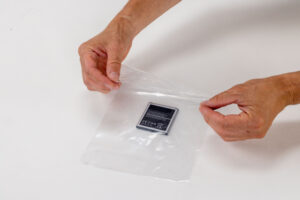So you’ve started collecting used batteries for recycling. Congratulations on beginning your battery recycling journey! You’re taking action and making a meaningful contribution to environmental protection.
Now it’s time to tackle the next crucial step: protecting your battery terminals.
Protecting your battery terminals is key to safely storing and recycling your used batteries.
WHY IS PROTECTING TERMINALS SO IMPORTANT?

Even when batteries run low and can no longer power our devices, they may still carry a residual charge. This charge can still be transferred through the battery terminals if they come into contact with metal objects, or other batteries. This can create sparks, posing both environmental and fire safety risks.
That’s why batteries should never be thrown in the garbage or regular recycling bins, where they may get in contact with other metal objects.
By protecting battery terminals and recycling batteries separately, you can prevent them from short-circuiting, reduce risks of possible fires, and ensure the safety of everyone involved in the recycling process.
BATTERIES THAT REQUIRE TERMINAL PROTECTION
Certain types of batteries require precautions due to their energy density and propensity to get into a thermal runaway. So, it’s always important to identify them and prepare them for safe recycling.
Properly protecting the terminals of these batteries helps prevent hazards and ensure safe recycling.
- Lithium batteries. These can be rechargeable or non-rechargeable, and are commonly used in electronics or power banks. Their high energy density makes terminal protection essential to prevent sparks and fires.
- Coin (button) cell batteries. Found in small electronics such as calculators, watches and small toys. These batteries might seem harmless but can pose significant risks if not properly handled.
TIP:
Many common types of batteries do not require terminal protection. These include single-use alkaline based AA, AA, C and D batteries. These can be safely stored together in a non-metal container.
HOW TO PROTECT BATTERY TERMINALS
Protecting battery terminals is easier than you might think. A small piece of tape or a sealable bag can go a long way in ensuring safe transit and storage. Here are two simple ways to protect your battery terminals:

Option 1: Tape terminals
Cover the terminals with clear packaging tape, duct tape or electrical tape. Make sure not to cover the brand name or chemistry on the label.

Option 2: Bag and seal
Place each battery in a clear, sealable / zipped bag.
Once you have protected the terminals of your collected batteries, store them in a non-metal container in a cool, dry place, away from direct sunlight. This ensures that your batteries remain safe until you are ready to take them to a battery drop-off location.









